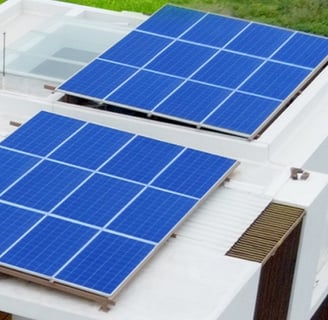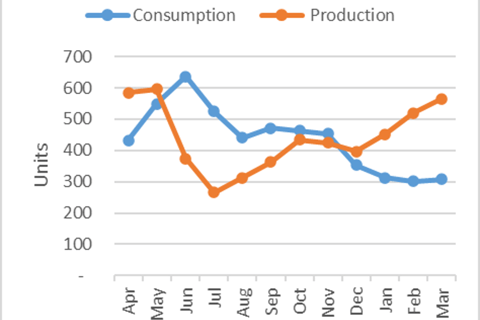Zero bill myth for house holds!
Is it possible to achive zero electricity bill for individual house holds
Sudhindra Hegde
1/27/20252 min read


We performed a study of typical house hold for seasonal power consumption along with Solar system performance in Mumbai region based on collection of data points.
The chart on the right shows typical consumption pattern superimposed with production.
Note: Different consumers will have different level of consumption. The chart is representative for an average household and is intended to depict the pattern of consumption. The chart for production is for that level of consumption with a minor buffer in capacity
Consumption
The consumption typically rises till June. This is due to increasing use of Fans, Air conditioners and refrigerators.
It then falls till august due to rains and falling ambient temperature.
The consumption remains steady from Sept till Nov and falls thereafter till Feb.


Why you cannot achieve zero electricity bill after installing solar system
Generation
The peak generation is in Apr and May. It falls in Jun and down to less than 50% of peak production in Jul.
It starts rising in Aug. It may be noted that the production falls slightly in Nov and Dec. This is because day length keeps reducing after Jun till Dec. During Jun till Oct this effect is overwhelmed by the effect of clouds. The production is at intermittent low in Dec and rises thereafter as the day length keeps increasing.
MSEDCL billing
The MSEDCL billing cycle starts in Apr and ends in Mar for those household with Net metering.
Any excess generated and exported to the grid is reflected as banked units in the monthly bills. In case the generation is lower than the consumption, the banked units are first adjusted before billing the rest.
It may be noted that the cycle starts in Apr with zero banked units. A well-designed solar system with generation capacity matching the consumption, one would see a surplus generation in Apr and excess units parked in Bank. This continues in May
But come June, the consumption is yet to fall but the suddenly the production falls significantly. So, it is highly likely that all the banked units are offset in Jun or at best in Jul. Most consumers would get billed for consumption from Jun till about Dec.
The excess production picks up around Dec-Jan and continues till Mar.
Note that all the banked units in Mar are settled in the Mar bill. MSEDCL pays for the banked units at certain rates which, obviously is lower than the rates at which consumption is billed.
Conclusion
Conclusion from above study is that consumers should not expect to get zero bills for energy consumption, unless buffer capacity is of the order of about 100%. Installing system with additional capacity makes no much sense considering additional capital cost with no matching benefit.
In terms of units, the optimal system may generate few extra units on full year basis. But getting billed for 10-20% of annual consumption is unavoidable.
Please note that in this study we are particular about billing for energy consumption. Users must be aware that they will continue to get billed for Fixed charges, even if the consumption is zero.
